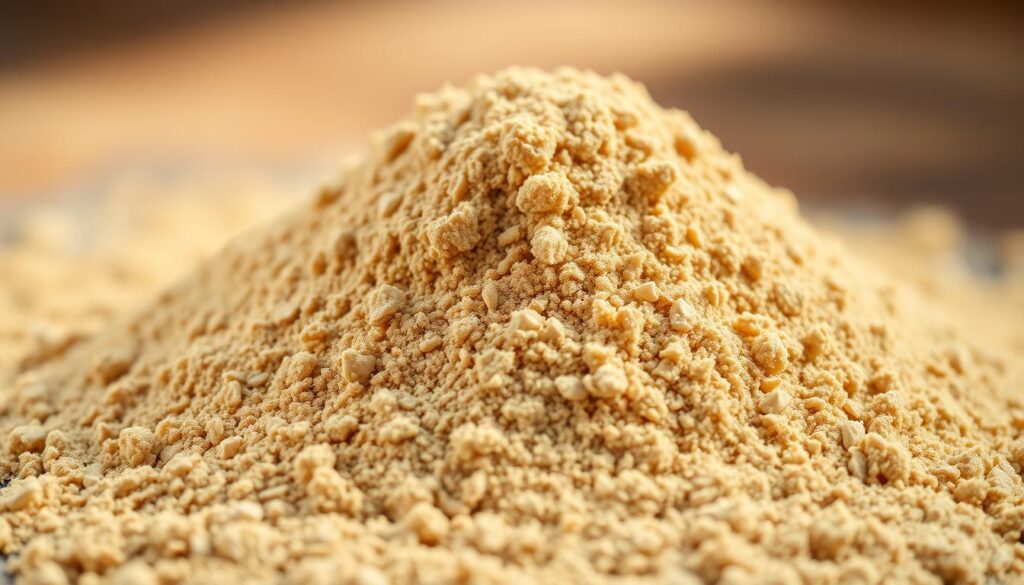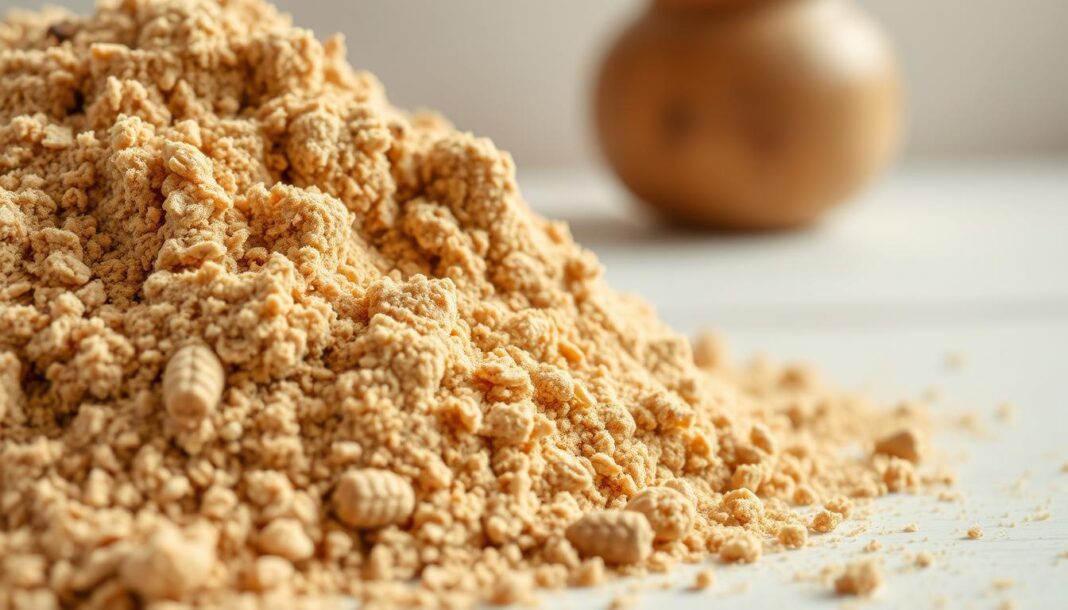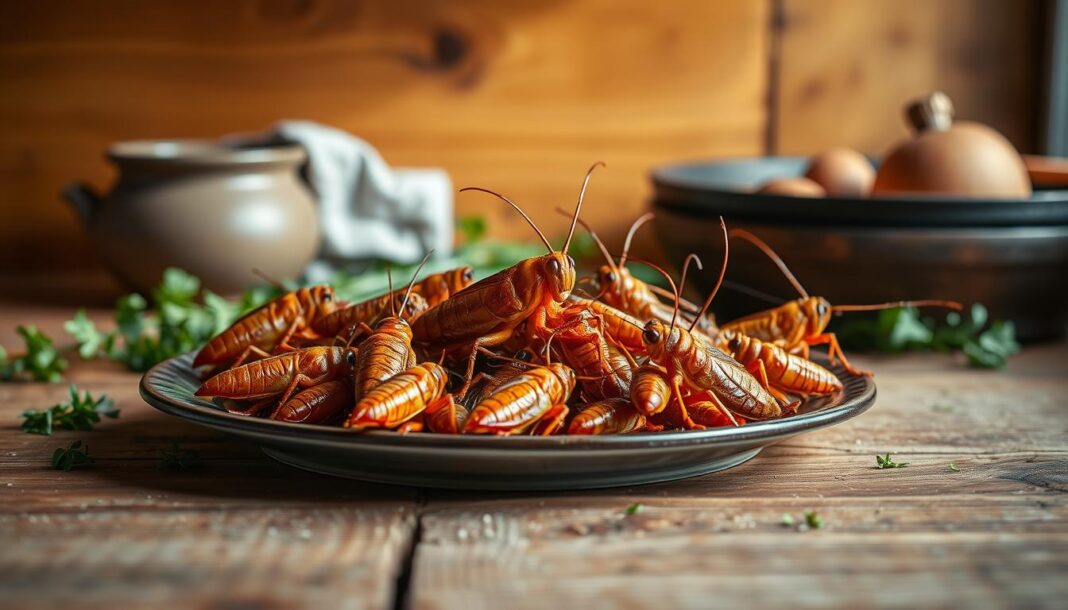We explore the unique characteristics of acorn flour, a traditional ingredient with a rich history in various cultures worldwide. Its distinctive flavor profile, which combines earthy, nutty, and mildly sweet notes, makes it a versatile addition to both sweet and savory dishes.
The flavor of acorn flour varies significantly based on factors such as the species of oak tree, processing methods, and freshness. As a gluten-free alternative to conventional wheat flour, it offers not only a unique taste but also nutritional benefits. For those interested in exploring recipes that utilize acorn flour, we have a comprehensive guide on acorn cake that showcases its culinary potential.
Key Takeaways
- Acorn flour has a distinct flavor profile that is earthy, nutty, and mildly sweet.
- The flavor varies based on the oak tree species, processing methods, and freshness.
- It serves as a gluten-free alternative with significant nutritional benefits.
- Acorn flour can be used in both sweet and savory dishes.
- Understanding its taste characteristics can enhance culinary creativity.
Understanding Acorn Flour: Nature’s Ancient Ingredient
Acorn flour is made by grinding acorns into a fine powder, often after removing bitter tannins. This labor-intensive process transforms these abundant tree nuts into a versatile cooking ingredient.
What Is Acorn Flour?
Acorn flour is derived from ground acorns that have undergone a tannin removal process. The process involves collecting, shelling, leaching to remove bitter tannins, drying, and grinding acorns into a fine powder that can substitute for conventional wheat flour in many recipes.
| Characteristics | White Oak Acorns | Red Oak Acorns |
|---|---|---|
| Tannin Content | Lower | Higher |
| Flavor Profile | Sweeter, more delicate | Bitter, robust |
| Processing Requirement | Less processing | More processing |

Historical Significance and Modern Revival
Historically, acorn flour served as a dietary staple for many indigenous peoples, particularly in North America and parts of Europe, Asia, and North Africa, where oak trees were abundant. The modern revival of acorn flour represents both a reconnection with traditional food ways and an exploration of sustainable, locally-sourced ingredients.
While wheat flour has largely replaced acorn flour in contemporary diets, growing interest in pre-agricultural foods, gluten-free alternatives, and foraged ingredients has sparked renewed appreciation for this ancient food.
The Unique Flavor Profile of Acorn Flour Taste
The unique flavor profile of acorn flour is a complex blend of nutty, earthy, and sweet notes that elevates various dishes. This distinct taste is a result of the intricate interplay between the natural characteristics of acorns and the processing methods employed to create the flour.
Nutty Undertones
One of the defining characteristics of acorn flour is its warm, nutty flavor, reminiscent of roasted hazelnuts or chestnuts. This nutty essence becomes more pronounced when the flour is lightly toasted, intensifying its aroma and adding depth to recipes. The nutty undertones are a result of the natural oils present in the acorns, which are preserved during the processing of the flour.
Earthy Characteristics
Acorn flour is also distinguished by its earthy undertone, which lends a grounded, natural quality to dishes. This earthiness connects the culinary creations to wild food traditions and pairs well with other foraged ingredients like mushrooms, game meats, and root vegetables. The earthy characteristic is a hallmark of acorn flour, making it a unique ingredient in modern cooking.
Mild Sweetness
While not as sweet as chestnut flour, acorn flour offers a gentle sweetness, particularly when sourced from white oak acorns, which are known to have lower tannin levels. This mild natural sweetness makes acorn flour suitable for both sweet and savory applications, allowing it to be paired with ingredients like cinnamon and chocolate in baked goods, or used in savory dishes without adding refined sugars.
Rich Depth and Complexity
The rich depth and complexity of acorn flour stem from its layered flavor profile, which evolves throughout the eating experience. This complexity offers more dimension than conventional wheat flour, making acorn flour an excellent choice for a variety of culinary applications, from bread to cookies. The interplay between the nutty, earthy, and sweet notes creates a distinctive taste experience that can be further enhanced by complementary ingredients like butter, honey, or robust herbs.
We find that the flavor complexity of acorn flour allows it to stand out as a featured ingredient in simple preparations or to add subtle depth to more elaborate recipes. The versatility of acorn flour makes it a valuable addition to any kitchen, offering a unique flavor profile that can elevate a wide range of dishes.
- The flavor profile of acorn flour presents a harmonious blend of nutty undertones, earthy characteristics, and mild sweetness.
- The distinctive earthiness in acorn flour provides a grounded quality that complements other foraged ingredients.
- A mild natural sweetness characterizes acorn flour, especially varieties made from white oak acorns.
- The rich depth and complexity of acorn flour offer more dimension than conventional wheat flour.
- Acorn flour’s flavor complexity allows it to be used as a featured ingredient or to add subtle depth to recipes.
Factors Affecting Acorn Flour Taste
Acorn flour’s distinct taste is shaped by multiple elements, including the type of oak tree and processing methods. The complexity of its flavor profile makes it a fascinating ingredient for culinary exploration.
Oak Species Variations
The species of oak tree from which acorns are harvested plays a significant role in determining the flour’s flavor. Different oak species produce acorns with varying levels of tannins and sweetness. For instance, white oak varieties generally produce sweeter, milder flour, while red oak acorns yield more robust, earthy flavors with higher tannin content. This variation in flavor profile allows for a range of culinary applications, from baking to savory dishes.
Processing Methods: Cold vs. Hot Leaching
The method used to process acorns into flour significantly affects its taste. Cold leaching, which involves soaking acorns in water over several days, preserves more of their natural starches and sweetness. This method is preferred for baking as it yields flour with complex flavor notes ideal for muffins or breads. In contrast, hot leaching involves boiling acorns to remove tannins quickly but reduces starch content, resulting in a softer flour better suited for soups, sauces, or porridges.
| Processing Method | Flavor Profile | Culinary Use |
|---|---|---|
| Cold Leaching | Complex, sweeter | Baking (muffins, bread) |
| Hot Leaching | Soffer, less sweet | Soups, sauces, porridges |
Freshness and Storage Impact
As with most flours, the freshness of acorn flour significantly impacts its flavor. Freshly made acorn flour retains vibrant, complex notes, while older flour may lose some of its aromatic qualities. Proper storage conditions, such as refrigeration or freezing, help preserve the natural oils in the flour that contribute to its distinctive taste. Improper storage at room temperature for extended periods can lead to rancidity.
By understanding these factors, cooks can better utilize acorn flour in their recipes, appreciating its unique flavor profile and the versatility it brings to various dishes.
Making and Using Acorn Flour in the Kitchen
Unlocking the potential of acorn flour in your kitchen begins with understanding its production process and versatile applications. We will guide you through making acorn flour at home, exploring its culinary uses, and comparing it with other nut flours.
How to Make Acorn Flour at Home

To make acorn flour, start by collecting quality acorns, preferably free of weevil damage. Shell them and then employ either cold leaching (soaking in water for several days) or hot leaching (boiling) to remove bitter tannins.
After leaching, dry the acorns thoroughly using low temperatures (ideally below 95°F) to preserve flavor compounds and prevent darkening. Then, grind them into a fine flour using a food processor or grinder. This process yields approximately 2/3 cup of flour per pound of whole acorns.
Culinary Applications and Recipe Ideas
Acorn flour is versatile and can be used in various dishes, from baking (bread, pancakes, cookies) to thickening soups and stews, and in paleo-friendly baking. It excels in hearty breads, pancakes, and muffins where its nutty depth complements ingredients like dried fruit, butter, and warm spices.
When substituting acorn flour in recipes, we recommend starting with a 25% replacement of wheat flour to maintain structural integrity while introducing the unique flavor.
Acorn Flour vs. Other Nut Flours
Compared to other nut flours, acorn flour contains less fat than almond flour, more complex carbohydrates than coconut flour, and offers a more pronounced earthiness than chestnut flour. This makes it particularly suitable for rustic baked goods and hearty cooking.
Embracing the Distinctive Taste of Acorn Flour in Modern Cooking
Incorporating acorn flour into your recipes not only adds a new dimension of flavor but also connects you to a tradition that spans thousands of years. As we have explored, acorn flour’s versatility allows it to shine in multiple dishes, from baking bread and muffins to thickening soups and stews, and in paleo-friendly baking. Its unique flavor profile, characterized by nutty undertones and earthy characteristics, complements today’s interest in foraged ingredients and sustainable food systems.
We have seen that modern culinary enthusiasts are rediscovering acorn flour as both a connection to traditional foodways and an exciting ingredient that brings unique flavor dimensions to contemporary cooking. To successfully integrate acorn flour into your cooking, it’s essential to understand its properties: it absorbs more liquid than wheat flour, benefits from longer resting times in batters, and develops deeper flavor when lightly toasted before use.
Beyond its culinary applications, acorn flour offers several health benefits, including being high in fiber, rich in antioxidants, and having a low glycemic index. As interest in regional and historical cuisines continues to grow, acorn flour represents an opportunity to connect with food traditions while creating innovative dishes. By experimenting with different applications and understanding the factors that influence its taste, you can unlock the full potential of this ancient ingredient in modern cooking.


